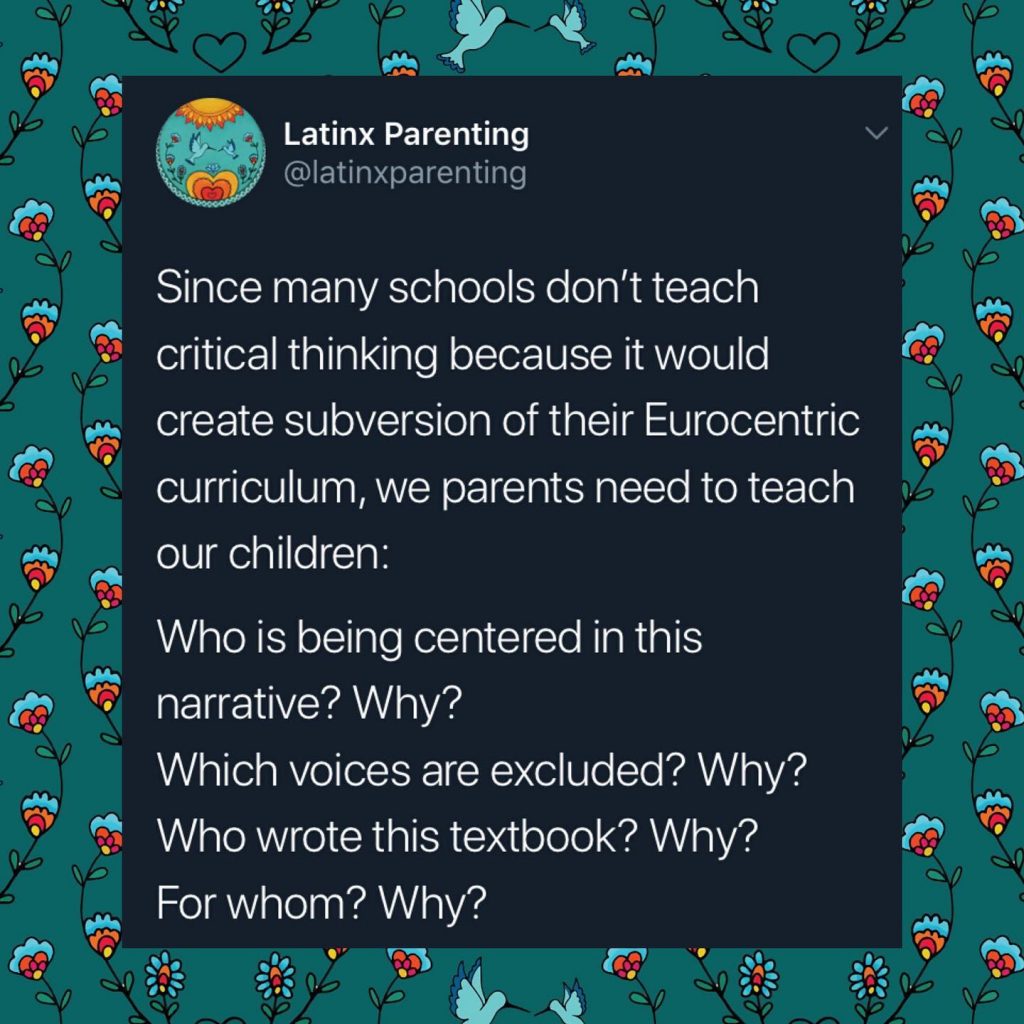Last month, my feeds were filled with mentions of antiracist books, social justice movies, statements in solidarity, and diverse book and toy purchases for younger loved ones. Are any of these things inherently bad? Of course not! But, it gave me cause to pause. Tre Johnson’s Washington Post article, “When Black people are in pain, white people just join book clubs,” is a thought-provoking read. I find myself asking, “What’s next?” How do those of us who identify and pass as white listen, learn and contribute in a way that doesn’t center whiteness or frame diversity as “diversity for white people”?
In thinking about children’s books in particular, there are significant concerns about how Black writers are treated and paid by the publishing industry and the lack of diverse representation in the field as a whole. 86% of children’s books have white main characters. This is the case despite the fact that children’s books with BIPOC (Black, Indigenous and People of Color) main characters sell, as reported by Dashka Slater for Mother Jones.
I hope that children’s books are unpacked with children. How do parents learn what and how to unpack concepts of race, gender identity, ableism, and class? We need to do our own work first. Read anti-racist resources. Complete an implicit bias test. Research to learn more. I’m thankful for those friends and students who were willing to teach me, but I had to do my own work, too. As a cisgender-heterosexual-white female, I’ve needed to unlearn biases and messages that I’ve received throughout my life.
A book or movie is more than just that. When we read or watch things, they become part of our moral imagination. We began to envision a world like we read or see. What we read or watch can reinforce or challenge our thoughts about ourselves and the world. (For example, there was a student who wrote their capstone on how the casting of a black male as US president in the television show, 24, helped prepare viewers for a black male president before the 2008 election.)
There’s also a downside to our moral imagination at times. How do we read stories by a variety of voices about a myriad of experiences and not assume that one person’s experience is representative of all experiences? How many stories that don’t play into problematic tropes and stereotypes get published? Again, I see this as unlearning biases and discussing what and why tropes are problematic. There’s also a need to recognize that one voice or character is just that — the voice for that one real or fictional individual — and not representative of all experiences of individuals who look or identify similarly.
How can we apply critical thinking skills to how we consume information? I approach children’s texts similarly to how I approach texts that I read or teach. Both what is and what is not included in a writing are important. And, parents and caregivers can also unpack the text as it does or does not apply and relate to their own lenses, values and experiences. If you notice in the questions below, it’s imperative to ask not just who and what, but the why.

Next, I think about how I can unpack all of this in an age-appropriate way with my seven-year-old daughter. I typically let her read books on her own, do a fast skim of what she’s reading at some point, and then discuss the text with her at a separate time.
I’ll find a time when we have five-ten minutes to talk that’s not too late and ask her to share her thoughts about the book. I’ll ask a few follow-up questions to discuss the why behind the characters’ decisions or feelings. Then I’ll share my thoughts about the book. If the text warrants multiple conversations or is a longer chapter book, we’ll talk more about it at later points.
Obviously, you know your child best. But, what books and entertainment you expose your child to and how you frame them are worth considering. If you’re reading a fairy tale, can you take a few minutes after to talk about how cisgender women don’t need saving or provide a few examples of people who found their happily ever after without being in a relationship? If you’re a white family and you’re reading a book with a main character of color, how can you discuss the book without centering whiteness or viewing the character as representative of all BIPOC individuals?
How have I approached unpacking popular children’s books? Click here for my thoughts on The Bad Seed by Jory John.
How have you approached these conversations? What resources have you found to be helpful? Any questions? Please comment below xoxo